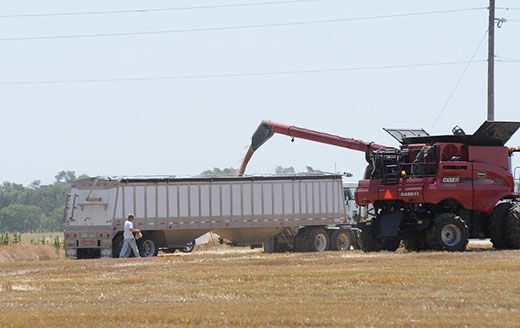Ag retailers prepared for spring despite uncertainties
Ag retailers are on relatively firm footing as they prepare for spring following a tumultuous 2019 growing season marked by adverse weather, flooding and delayed harvest. Existing inventories of seed, agrochemicals, and fertilizer should meet customer needs during the 2020 planting season, which is expected to see an expansion in planted corn and soybean acres.
A new report from CoBank’s Knowledge Exchange division indicates that demand for crop protection products and spraying, fertilization and other customized application services will likely be robust, given current field conditions and the larger than expected increase in acres.
“The amount of unplanted and unharvested acres from 2019 creates a situation where there’s extra work to be done,” said Ken Zuckerberg, CoBank’s lead grain and farm supply economist. “Unharvested acres will not be serviceable from an agronomic perspective until the crop is brought in and acres that went unplanted last year will require extra time and maintenance this year.”
Tillage, chemical and fertilizer application and other field activities will take place later than normal on acres that went unharvested last year. Unplanted acres will require more attention to effectively control weeds, disease and insects.
Last year, September rains delayed harvest activities in parts of the Corn Belt and Midwest region and an October blizzard severely restricted harvest in North Dakota. USDA’s annual December survey estimated that 8% of the U.S. corn crop went unharvested in 2019, compared to an average of 1.4% during the previous three years. North Dakota was impacted more than other states as an estimated 50% of its corn acres were unharvested as of USDA’s January survey.
“Growers in affected areas may find they’ll need more agronomic services and support than usual this year just to get caught up,” said Zuckerberg. “Additionally, their farm machinery and equipment will need to be up and running for the heavy workload to come.”
Adverse weather and specifically flooding remain elevated risk factors this season with forecasts for above-average precipitation this spring, on top of already saturated soils. Agronomy sales and service could take a hit if weather once again leads to high prevented planting.
Solid Financial Footing
Farmer prepayments and accounts receivables trends reported by farm supply cooperatives remain in line with 2018 despite farmer financial stress, indicating a stable-to-improved outlook for agronomy sales and services.
Despite 2019’s difficulties, USDA reported that consolidated net farm income totaled $93.6 billion, up 12% versus $83.8 billion in 2018. Although that included nearly $24 billion of support provided through various USDA farm subsidy programs, including market facilitation payments in 2018 and 2019.
One risk factor that’s difficult to quantify at this juncture is COVID-19 (coronavirus), which could potentially derail input supply chains and grain export activities both due to logistical bottlenecks as well as a strong U.S. dollar.
Watch a video synopsis and read the report, “Spring 2020 Agronomy Outlook: Retailers Are Adequately Prepared to Ride Out the Storm,” at cobank.com.


